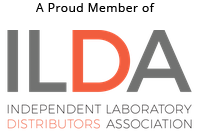-
- Consumables
- Cell Culture Dishes (106)
- Bags (227)
- Cell Culture Flasks (109)
- Cell Scrapers and Lifters (10)
- Cell Strainers (16)
- Consumables Recycling (35)
- Cuvettes (73)
- Filter Membranes (1726)
- Filtration Devices (1183)
- Gloves (906)
- Inoculation Loops, Spreaders, Needles (84)
- Incubation Trays (22)
- Microplates (425)
- Microscope Slides (330)
- Pasteur Pipets (15)
- Pipette Tips (711)
- Reservoirs (55)
- Tubes and Vials (770)
- Transfer Pipettes (126)
- Sealing Film (120)
- Serological Pipettes (160)
- Weighing Boats and Papers (81)
- Reagents
- Extraction Isolation and Purification Kits (1434)
- Agarose (28)
- Culture Media (1161)
- Gel Electrophoresis (26)
- Nucleotides (42)
- Nucleic Acid Isolation & Purification (98)
- qPCR Master Mix Kits (133)
- Recombinant Proteins (284)
- Water (58)
- Western Blot (40)
- Antibodies (45960)
- Hyclone Media (521)
- Equipment
- Bottletop Dispensers (318)
- Chiller (123)
- Scales and Balances (1187)
- Calibration Weights (9)
- Centrifuges (236)
- Incubators (93)
- Microbiology Incubators (27)
- Digital Burettes (32)
- Freezer Racks (552)
- Freezers and Refrigerators (647)
- Homogenizers (72)
- Hotplates and Hotplate Stirrers (88)
- Hotplate Stirrer Accessories (31)
- Lab Jacks (20)
- Microplate Mixers (20)
- Microscopes (58)
- Ovens (135)
- Overhead Stirrers and Stirrers (215)
- Pipettes (406)
- Roller Bottles (49)
- Roller Mixers (12)
- Rotary Evaporator (49)
- Seating (10)
- Shakers and Rockers (334)
- Thermal Cyclers (10)
- Tube Racks, Cryoboxes & Coolers (411)
- Vacuum Pump
- Water Baths (215)
- Test and Measurements (14)
-

Microcentrifuge Tube Buying Guide
At Sycamore Life Sciences we provide a variety of microcentrifuge tubes to satisfy your research needs. Before diving head first into your search for a microcentrifuge tube, it may be helpful to take a look at this quick guide. Knowing what tube to buy can save you time, money and frustration!
Tube Capacity
The volume a microcentrifuge tube holds is one of the first features to consider when making a purchasing decision. Microcentrifuge tubes come in a few popular volumes: 0.5, 1.5, 1.7, 1.8, and 2.0 mL. The right tube for you will depend on your research application, but a few key considerations are below.
High Sample Volume. Will you be using a small sample volume under 1.5 mL or might you need something with more volume? If you think your sample volume will be close to the 1.5 mL mark, you may consider a 1.7, 1.8, or 2.0 mL tube. These tubes occupy a similar footprint to your standard 1.5 mL microcentrifuge tube while providing extra volume for your applications.
Sterile Applications. Will your application require boiling or autoclaving? If so, consider this. The microcentrifuge tube lid can be one of the most non-sterile elements of the tube. Given this, it is important that the lid not come into contact with your sample, especially in sterile applications.
Confusion surrounding 1.5 and 1.7 mL tubes. You may have noticed in your research that some 1.5 mL microcentrifuge tubes fill beyond the final 1.5 mL graduation mark while others do not. In some cases, this extra volume is enough to consider the tube capacity to be 1.7 mL. Whether or not this extra space is available varies on a manufacturer basis.
In our ecommerce marketplace, we define microcentrifuge tube capacity as the maximum fill volume of the microcentrifuge tubes. Because of this you can expect the following: if a microcentrifuge tube is listed as having a 1.5 mL capacity that is the maximum advertised fill volume for that tube. It can hold no more liquid than 1.5mL. The same would be true for the 1.7 microcentrifuge tubes.
Cap Type
The majority of microcentrifuge tubes have either a screw cap or a snap cap. However, it’s also important to note that some microcentrifuge tubes may come without a cap.
Screw caps. This microcentrifuge tube cap type may include a seal and is typically used for storage as the cap helps to maintain integrity between series of openings and closings. Ideal for applications that require repeated use.
Snap caps. This cap type is the most common. The caps will “snap” closed with light pressure. The hinge attaching a snap-cap to the tube may wear down after repeated use, and, as such, they are not always ideal for applications that require multiple openings and closures of the tube.
In addition to these two types of caps, there are additional cap features to consider when making a purchasing decision. A few are mentioned below.
Secure locks. Used to keep the cap closed during centrifugation and vortexing.
Seals. Ideal for preventing sample from leaking while handling the tube.
Syringe ports. Often used in sterile applications where piercing the cap with a needle is required.
Sterility
Keep your samples free from contamination! Sterility is a serious consideration in most life science consumables purchases. If your sample is sensitive to contamination by foreign microbes, then it’s of the utmost importance that you select a product that is sterile or have proper sterilization methods available to you.
Typically, sterilized products are guaranteed free of living microorganisms. However, sterilization methods and certifications vary between vendors. For information about sterile certifications on products we distribute, contact as at support@sycamorebio.com.
Confusion: Sterility and Nuclease Free Products. Note that sterile products may not be RNase, DNase, PCR inhibitor, or foreign DNA free.
Packaging. Bear in mind that product packaging is important for sterile items. You may want to ensure that the sterile products you order are individually wrapped if you plan on storing them in a non-sterile environment.
Autoclavable
If your product is not sterile, consider whether it can be autoclaved. Autoclavable products are able to withstand the autoclaving process and allow for rapid sterilization in-lab. Tubes that are not autoclavable may melt or deform and can potentially damage the autoclave.
Remember that an autoclaved product is not always suitable for sensitive samples such as nucleic acids. This is because autoclaving WILL NOT denature all RNases. Most DNases will be denatured during autoclaving procedures though, so autoclaved tubes or vials may be suitable for DNA storage.
Caution. Some cap and tube materials may differ, meaning that, while the tube may be autoclavable, the cap may not be.
Nuclease Free
Nuclease free products are especially important for molecular biology workflows. RNases and DNases can destroy sensitive nucleic acid samples, costing you valuable time and money. Nuclease free products are necessary when handling nucleic acids to ensure sample integrity.
Confusion: Sterility and Nuclease Free Products. Just because a product is nuclease free, it should not be assumed that it is also sterile. As previously stated, not all sterile products are nuclease free.


